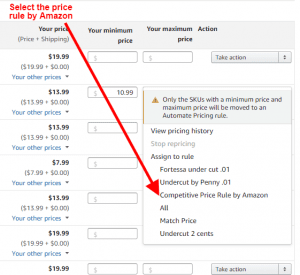Meet Bob Norberg, COO at eComEngine. His team builds tools that help Amazon sellers grow through analytics, alerts, and insights – all available in the Amazon Selling Partner Appstore.

Bob Norberg
Bob is the COO at eComEngine, where he leads efforts to empower Amazon sellers through smart analytics, competitive insights, and operational alerts.
From returns and reviews to stockouts and fees, eComEngine’s tools help sellers make better decisions and drive sales.
Outside of work, Bob is an EOS Integrator, a family man, a hobby rower, and a weekend hockey player.
Selling on Amazon today isn’t what it used to be. What began as a simple way for individuals to list products has become a competitive, data-driven environment.
Success depends on more than a good product—it takes precision, planning, and constant performance tracking. That’s where working with an Amazon agency can make a difference, helping sellers navigate the complexity.
At the core of it all? Key Performance Indicators (KPIs), and how they stack up against industry benchmarks. Don’t get caught off guard.
Table of Contents
The Pitfalls of Operating Without Data
Many Amazon sellers regularly review their performance metrics: sales growth, ad spend, refunds, and so on. But reviewing those numbers in a vacuum isn’t enough.
Here’s why: a refund rate of 3% or a TACoS (Total Advertising Cost of Sales) of 12% might seem acceptable, but are they?
Without a benchmark, there’s no context. You may be missing an early warning sign of profit leakage or failing to recognize where you’re outperforming competitors and should invest more aggressively.
What Are KPI Benchmarks and Why Do They Matter?
KPI benchmarks are reference points derived from industry norms, peer performance, or internal historical data. They provide a standard for evaluating whether your metrics fall into one of three categories:
- Underperforming (needs immediate attention)
- On track (performing within acceptable range)
- Outperforming (opportunity to scale)
Benchmarks transform KPIs from numbers into signals, enabling you to act quickly and with purpose. For sellers looking to streamline this process, tools like SellerPulse offer automated reporting and industry benchmarking.
These insights help Amazon sellers not only track their performance but also compare it against relevant peers, turning raw data into actionable strategies that improve profitability and operational efficiency.
Core Financial KPIs Every Amazon Seller Should Benchmark
Sales Growth
Measures demand momentum. Benchmarking this reveals whether your growth rate is competitive within your category.
Product Cost (COGS) as % of Sales
Keeps tabs on margin erosion. Rising costs or underpricing can kill profit even when sales are up.
Amazon Fees as % of Sales
Fulfillment and referral fees can quietly eat into margins. Tracking this as a percentage and comparing to norms helps identify when fees are trending too high.
TACoS (Total Advertising Cost of Sales)
Advertising spend in proportion to revenue. Benchmarking helps determine if you’re scaling profitably or burning cash.
Refunds as % of Sales
A leading indicator of customer satisfaction and product quality. High rates signal underlying issues that can harm both profit and brand.
Net Proceeds as % of Sales
Your true take-home after all costs. A declining trend is often a signal of operational inefficiency or margin compression.
Return on Investment (ROI)
Calculated as Net Proceeds / COGS. Benchmarking this gives a clean picture of capital efficiency.
Profit is a KPI, Not an Outcome
In a business where fees are rising and competition is relentless, sellers can’t afford to prioritize revenue over profit. Tracking your financial KPIs, and benchmarking them, ensures that every sales dollar is working for you, not against you.
Whether you’re managing a single ASIN or 1,000 ASINs, adopting a benchmarking mindset is what separates top-tier sellers from the rest.
The Strategic Advantage of Benchmarking
Benchmarking isn’t just about spotting problems, it’s about sharpening strategy. Sellers who benchmark consistently can identify their most profitable products and scale them with confidence. They are able to detect early-stage underperformance before it becomes a crisis and then make smarter decisions about pricing, ads, and inventory, as well as establish operational discipline to manage costs and preserve margins.
Put simply, benchmarking turns raw performance data into actionable business intelligence.
Take SellerPulse for a test drive today. Use code TRY60 for a free trial and 25% your first 2 months!
eComEngine helps Amazon sellers grow faster and smarter with tools that simplify operations and boost profitability. We make it easy to access and understand the most critical data points so you can protect your brand, manage inventory, decrease FBA fees, and increase sales. SellerPulse, delivers real-time listing alerts, profitability insights, and catalog intelligence to help you protect margins and stay competitive. FeedbackFive automates Amazon review and feedback requests and includes detailed reports and alerts to help you manage your seller reputation. RestockPro streamlines FBA inventory management to save you time and money.




